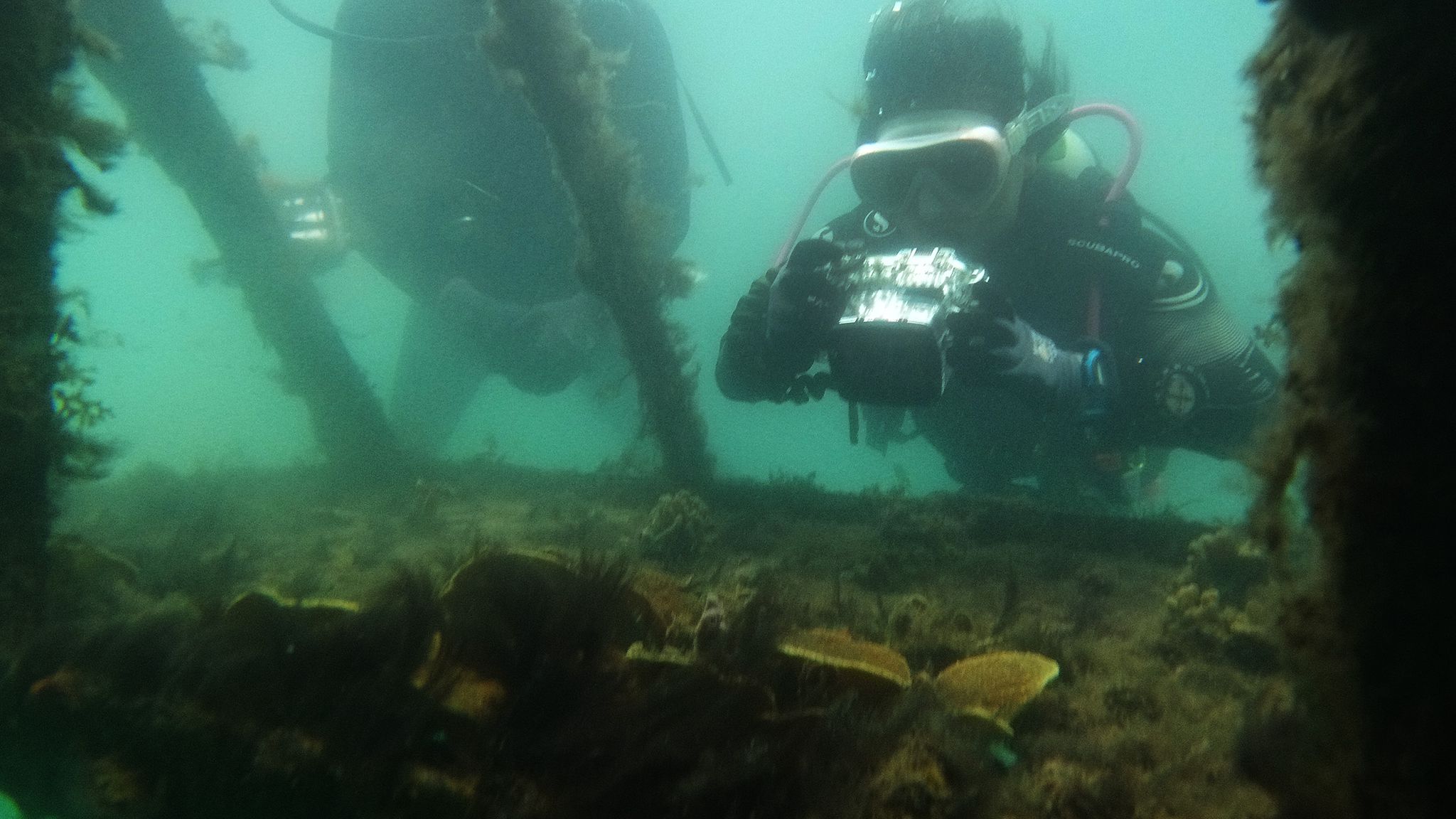On Water: Hidden Wonders
On Water: Hidden Wonders

Back in 2018, I remember my entire team feeling a little apprehensive when my professor announced his plans to rebuild coral communities at a recreational marina. The thought of the coral restoration effort being compounded by impacts of coastal recreation, boating activities and boating-related contaminants in the marina raised a few eyebrows in the room—“Can meh?”.
For years, my team at the Reef Ecology Laboratory has been racing against time to lend corals a hand in their fight against climate change and coastal development. We have been actively involved in restoring Singapore’s degraded coral reefs and creating new reef areas from artificial structures. As further loss of Singapore’s reefs is predicted over the next two decades, teaming up with ONE°15 Marina Sentosa Cove to establish a coral garden under the docks seemed like a perfect opportunity to help give corals a boost and to bring a part of our reefs back to the city.
A week later, we headed to the marina for a dive survey to take stock of its coral population and assess the feasibility of restoration.
Diving off a marina’s pontoon was a whole new experience for us. With my left hand on my mask, I tumbled off the edge of the pontoon and floated towards my buddy. I gave my buddy a thumbs-down to signal my intent to start the dive and sank slowly into the emerald-green waters of the marina. It took me just five seconds to reach the silty seafloor. Looking at my dive compass, we finned slowly towards the artificial seawall structure—the starting point of our coral survey. There, I found myself manoeuvring around long strands of sargassum seaweed and piles of granite rocks, taking photographs and scribbling the names of all the corals in my path. Unlike other natural reefs in Singapore that I have dived in, most of the coral colonies in the marina were fist-sized and sparsely scattered along the seawall.
Some of the corals, however, were massive. For instance, the disk corals were wider than a metre and had ruffles that made them look like cabbages. Just seven minutes into the survey, I was distracted by a tigertail seahorse gently twirling around the base of the seaweed, trying to find its perfect hiding spot. Three flutter kicks later, a colour-changing cuttlefish laying its eggs within a carnation coral instantly drew my attention away from the corals. I could not help admiring colourful reef fishes zipping around the corals, especially the juvenile parrotfish that were busy nibbling on the boulder corals.
My team nodded in approval as we emerged though the water surface. We were all pleasantly surprised by the diversity of naturally occurring corals thriving in the marina’s artificial environment. In just 60 minutes of our dive into the marina’s waters, we recorded 153 coral colonies spanning across 26 species. Of which, some of the massive and plate-like hard coral species, such as brain corals, pore corals and flowery disk corals, are also commonly found on Singapore’s reefs. The recruitment of various types of coral spats and presence of stable granite rocks indicated an ideal environment to create a coral garden within the marina.
From the visual assessment of the marina’s marine life and underwater conditions, we devised a plan to transform plots of barren granite rocks into a vibrant coral garden. To rebuild the coral communities in the marina, we employed the coral gardening technique, in which corals are first reared in nurseries before being transplanted back onto the seawalls of the marina. The coral nurseries were specially designed to suit the marina’s unique environment. By hanging the coral nurseries along the floating pontoon, the reared corals would be constantly submerged at an optimum depth despite changing tides, and the seabed area can be maximised to populate the marina with more corals. The large base of the coral nurseries created additional space for marine life to colonise. The coral nurseries were also perforated to facilitate good water flow around the structures and reduce sediment accumulation that may smother the corals.
With a green basket looped around my right arm, I went searching for corals that were half-buried in the seabed or stuck in between rock crevices. These were loose corals that had been dislodged from the granite rocks or the parent colonies by wave actions, marine animals or human activities—and would have perished if left on their own. Picking up my hammer and chisel, I carefully fragmented each rescued coral into smaller finger-sized pieces and placed them back into the basket.
Then, we scrutinised each fragment and handpicked suitable ones for nursery rearing. We assembled the coral fragments in neat rows before securing them with putty-like adhesive on the coral nurseries.
Like weeding a garden, the coral nurseries were maintained regularly by removing overgrown seaweeds around the corals and the structures. In about three to six months, nursery-reared corals that had grown to a palm-size were harvested for outplanting. In a bare spot a few metres away from the coral nurseries, we scrubbed off all algae and sediments on large granite rocks before attaching the corals on them. We have planted over 230 corals of various species and growth forms, populating the marina’s coral garden. Following the transplantation, we returned regularly to review and document the corals’ growth and survivorship. So far, most of the coral colonies appear healthy. Our transplantation efforts have contributed more than 2m2, which is about the size of a super single bed, of live coral area to the marina. That is sizeable considering that corals grow 0.3cm to 2cm a year for massive corals, and up to 10cm a year for branching corals.
During some of our monitoring dives, we have spotted pairs of butterflyfish nibbling on the coral transplants and marine creatures, and seeking refuge among the corals’ branching structures. Larger marine animals such as Rafael the hawksbill turtle, otters, groupers and even an eagle ray have also been sighted cruising around or using ONE°15 Marina Coral Garden as a hunting ground. When the tides were low, its newest secret unveils itself. Neat clusters of green-, orange- and bronze-coloured corals form a trail lining the base of the marina’s northwestern seawalls, with schools of playful damselfish weaving around.
The findings from our research have also indicated that the coral garden initiative by the marina has the potential to complement other local habitat restoration efforts by researchers and policymakers to safeguard our marine biodiversity.
The upkeep of ONE°15 Marina Coral Garden is currently undertaken by volunteer scientists from Reef Ecology Laboratory and divers from Our Singapore Reefs. Coupled with the marina’s commitment in promoting environmental stewardship through its operations and public engagement efforts, we are sure that the coral garden will become a haven for marine life to flourish and thrive.

